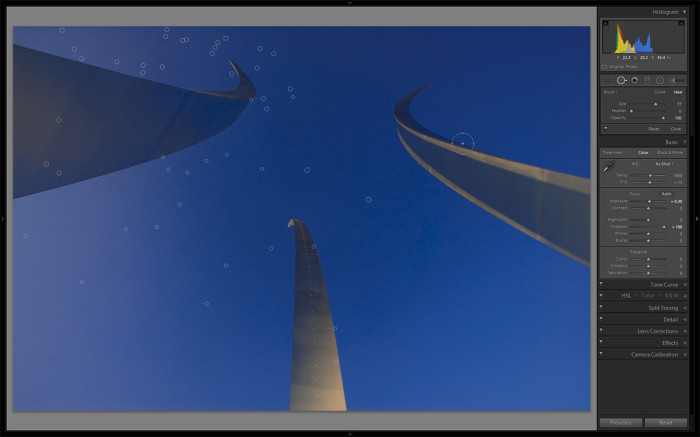
Ever go through a series of photos to see a spot at the same place on every image? Digital cameras have made so many advancements in convenience, and accessibility to photographers. Just going around the Tidal Basin in Washington, DC to look at cherry blossoms, you can see the impact. I can remember going walking around the blooms when I was younger with many cameras around, but not nearly to the extent that there is today.
Shooting with film, however, did have some advantages. One of them was that the “sensor” was cleaned EVERY single time a photo was taken. The film was nicely protected in a hard plastic cartridge, fed through a tiny slit that wiped the sides of the film clean before it was placed in position to be exposed. After an exposure was made on the frame, it was moved out of the way as a new part of the film was moved into place – there was no reuse of the same section – unless you had a failure of your mechanical system, or were very advanced in your multiple-exposure plan for your image.
Arlington, Virginia
When taking landscape or other travel images where you are exposing large parts of clouds or open sky, digital cameras will show you spots where there is dust on your sensor. When shooting landscapes from a tripod, you have the luxury of using low ISO and a stopped-down aperture. Using these settings, it will be very evident where dust spots are on your sensor. When the using more open apertures, the dust will be too close to the sensor to be seen in your images. Regularly shooting at f/4 or below, you may not notice that you sensor even has any dust!
This image looked perfectly fine at the time I took it at the Air Force Memorial. When I brought it into Lightroom and took a look at the images at 100%, there were so many spots. Here is a screen shot of the image where each circle is a point from the “Spot Removal” tool. I have made them larger if you would like to download and see how bad this case was.
TimeLine Media – www.timelinedc.com
703-864-8208







